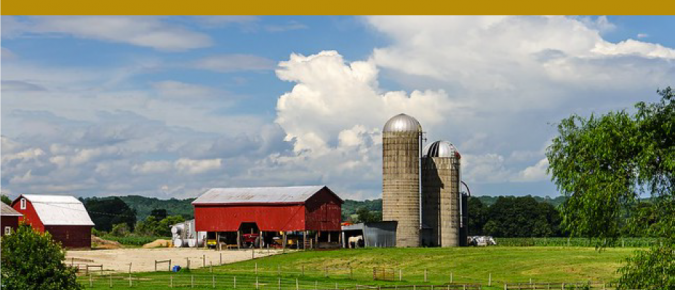Summary May 2020 — Tessa Conroy discusses what the 1918 flu can teach us about the economic impacts of pandemics. Webinar Recording Additional Materials What Does the 1918 Flu Reveal About the Economic Impacts of a Pandemic? PowerPoint Explore Our Lunch-n-Learn Series
Summary Tessa Conroy discusses the role of broadband and Internet access in Economic Development across Wisconsin as part of UW-Extension’s Lunch n’ Learn series. Webinar Recording Additional Materials Broadband in Rural Economic Development PowerPoint Explore Our Lunch-n-Learn Series
Summary Matt Kures discusses potential impacts of the COVID-19 crisis on Wisconsin’s tourism and service economy, including estimated loss of revenue and employment. Webinar Recording Additional Materials Exposed: The Potential Impact of COVID-19 on the Tourism & Service Economy PowerPoint Explore Our Lunch-n-Learn Series
Summary Steven Deller discusses the importance of a systems thinking approach – how the elements of a system are interconnected and influence each other – in community economic development. Webinar Recording Additional Materials Community Economic Development: A Systems Thinking Approach PowerPoint Explore Our Lunch-n-Learn Series
Summary Tessa Conroy discusses the status of child care in Wisconsin and has several guests discuss the strategies that they have seen or contributed to. These guests include: Jessie Small from Total Administrative Services Corporation (TASC) Courtney Berner from the UW Center for Cooperatives (UWCC) Paula Drew from the Wisconsin Early Childhood Association (WECA) Karl […]
The growth in student debt in the United States has become a cause for concern. At the beginning of 2006, student debt, or loans taken out to pursue higher educational opportunities, was approximately $481 billion. By the beginning of 2019, that amount has grown to nearly $1.6 trillion (Figure 1a). While student loan debt remains smaller than consumer credit debt ($4.1 trillion) or mortgage debt ($15.5 trillion), the rate of growth of student debt is alarming.
Summary Steven Deller discusses Community Development, Economic Development, and Community Economic Development and the differences between them. Webinar Recording Additional Materials What-is-Community-Economic-Development Explore Our Lunch-n-Learn Series
The US is significantly oversupplied with retail space. We have as much as 10-times the square feet per person as Germany. This has contributed to as many as 10,000 store closures this year. Smaller community malls have been hurt the most. Those that remain open typically operate at a vacancy rate of 10% or more. […]
Numerous communities across Wisconsin encourage and support resident participation in local initiatives. These are places with high volunteerism rates where members can undertake constructive conversations about issues facing the community. Newcomers, along with their ideas and input, are welcomed. Sometimes, it is said that these communities have high levels of “social capital”.
EXECUTIVE SUMMARY October 2019 — The intent of this study is to update prior analysis documenting the contribution of hospitals to the Wisconsin economy. For this update we use the most recently available data (2016) and expand the analysis to also consider non-hospital related health care sectors. The health care sector remains one of the […]
August 2019 — In recent decades, significant resources have been devoted to entrepreneurship, and studies find net annual job creation is positive only for startups (Economic Innovation Group, 2017; Conroy and Deller, 2015). As a result, growth potential of existing firms is sometimes overlooked. Expansions, existing firms adding jobs, create 75% of gross new employment […]
EXECUTIVE SUMMARY October 2019 — This study provides an update of the Contribution of Agriculture to the Wisconsin Economy undertaken by Deller (2014) using data for 2017, the most current available. Despite currently weak commodity prices, particularly within dairy, agriculture (defined to include on-farm activities, food processing, forestry and horticulture) remains an important part of […]
















